
Plumbous oxide (PbO) formula, properties, risks and uses

The plumb rust, Lead (II) oxide or lead monoxide, is a chemical compound with the formula PbO. It is found in two polymorphs: litharge and masicotite. Its structure is illustrated in figure 1.
Returning to composition, litharge is the oxidized product of molten lead that has been stirred or atomized to incorporate air, then cooled and ground to form the yellow powder..
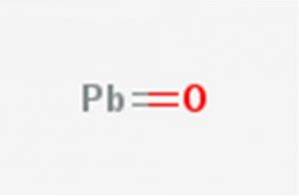
The name masicotite is used both for the native mineral and for the lead monoxide product produced by heating lead carbonate to 300ºC (Lead monoxide, 2016). These minerals are shown in figure 2.
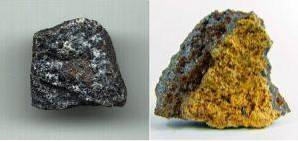
Masicotite has an orthorhombic structure while litharge has a tetragonal crystal structure. Lead (II) oxide has the ability to change structure when heated or cooled. These structures are shown in figure 3.
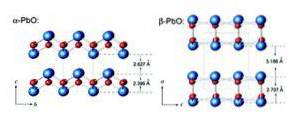
PbO is produced by oxidizing metallic lead. The metal is melted to make lead tablets, and then they are ground between 170 ~ 210 ° C and passed through the flame for oxidation at temperatures above 600 ℃. The oxide products are crushed to obtain the finished lead oxide (Kirk-Othmer, 1995).
2Pb + O2 → 2PbO
PbO is produced on a large scale as an intermediate in the refining of lead ores into metallic lead. The lead mineral used is galena (lead (II) sulfide). At high temperature (1000 ° C) the sulfide is converted to oxide in the following way:
2PbS + 3O2 → 2PbO + 2SO2
Article index
- 1 Physical and chemical properties of plumbus oxide
- 2 Reactivity and hazards
- 3 Uses
- 4 References
Plumbous oxide physical and chemical properties
Lead monoxide can present two different appearances: as a yellow dry powder with an orthorhombic structure (masicotite) or as a reddish tetragonal crystals (litharge). Both ways are illustrated in figure 4.
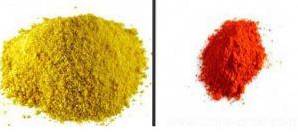
The compound has a molecular weight of 223.20 g / mol and a density of 9.53 g / ml. It has a melting point of 888 ° C and a boiling point of 1470 ° C (National Center for Biotechnology Information, S.F.).
The compound is very poorly soluble in water, being able to dissolve just 0.0504 grams per liter at 25 ° C in the form of masicotite and 0.1065 grams per liter at 25 ° C in the form of litharge. The compound is also insoluble in alcohol. It is soluble in acetic acid, dilute HNO3 and alkalis (Royal Society of Chemistry, 2015).
The compound is a weak oxidizing or reducing agent, however, redox reactions can still occur. These compounds are not reactive to water.
Lead oxide oxidizes aluminum carbide with incandescence when heated. Mixtures of lead oxide with aluminum dust (as with other metals: sodium, zirconium) give a violent explosion.
Reactivity and hazards
Lead monoxide is a compound classified as poisonous. The substance is toxic to the central nervous system and may be carcinogenic in humans (Material Safety Data Sheet Lead oxide, yellow, 2013).
The early poisoning symptom is lead lines that appear on the edge of the gums and the skin turns gray. Neurasthenic syndrome will also arise in the initial period of envenomation..
Cerebellar poisoning can result in lead poisoning depression, lead poisoning mania, as well as lead toxicity and sensitivity to multiple neuritis paralysis.
Lead poisoning can also cause hypochromic anemia and endocrine and metabolic disorders. Additionally, lead poisoning can inhibit the activity of certain enzymes in the digestive system and cause indigestion, severe abdominal pain, and liver damage. It can also cause high blood pressure and increased cholesterol..
If there is severe abdominal pain, some measures can be taken such as, subcutaneous injection of atropine and other drugs, hot abdominal, enema, hot bath and so on. The maximum concentration allowed in the air is 0.01 mg / m3 (Lead monoxide, 2016).
In case of contact with the eyes or with the skin, it should be washed with plenty of water. In case of inhalation or ingestion, the victim should be taken to a ventilated place. Vomiting should not be induced. If victim is not breathing, mouth-to-mouth resuscitation should be given.
In all cases, immediate medical attention should be sought. Lead monoxide is a harmful compound for the environment, the bioaccumulation of this chemical can occur in plants and mammals.
It is strongly recommended that this substance does not enter the environment, so it must be handled and stored according to the established stipulations (National Institute for Occupational Safety and Health, 2015).
Applications
Lead monoxide has been used as a paint drier and as a low-fire flow in the manufacture of ceramics and glass. Lead crystal glass is used in the manufacture of high quality tableware.
Using lead monoxide as a flux, it is possible to obtain a glass with a high refractive index and, consequently, the desired brightness (British Encyclopedia, 2016).
Semi-metallic ceramic conductors have the highest conductivities of all ceramics except superconducting ones. Lead oxide is an example of this type of semi-metallic ceramics. These materials have overlapping electron energy bands and are therefore excellent electronic conductors (Mason, 2008).
Lead oxide is mainly used in electron tubes, picture tubes, optical glass, anti-X-ray lead glass, and radiation resistant rubbers..
It is used as an analytical reagent, the silicate flow, but also for the precipitation of amino acids
Lead oxide is used in the manufacture of PVC plastic stabilizer and is also the raw material for other lead salts. It is also used in the refining of petroleum and for the determination of gold and silver..
It is also used as a yellow pigment in paints and enamels. Masicotite was used as a pigment by artists from the 15th to 18th centuries.
Thin layers of lead monoxide are used to produce iridescent colors in brass and bronze. Litharge is mixed with glycerol to make plumber's cement.
References
- Encyclopedia Britannica. (2016, October 10). Glass. Recovered from britannica: britannica.com.
- Kirk-Othmer. (nineteen ninety five). Encyclopedia of Chemical Technology. 4th ed. Volumes 1. New York: John Wiley and Sons.
- Lead monoxide. (2016, May 1). Recovered from cameo.mfa: cameo.mfa.org.
- Lead monoxide. (2016). Recovered from chemicalbook: chemicalbook.com.
- Mason, T. O. (2008, March 12). Conductive ceramics. Recovered from britannica: britannica.com.
- Material Safety Data Sheet Lead oxide, yellow. (2013, May 21). Recovered from sciencelab: sciencelab.com.
- National Center for Biotechnology Information. (S.F.). PubChem Compound Database; CID = 14827. Recovered from PubChem: pubchem.ncbi.nlm.nih.gov.
- National Institute for Occupational Safety and Health. (2015, July 22). LEAD (II) OXIDE. Recovered from cdc.gov: cdc.gov.
- Royal Society of Chemistry. (2015). Lead (II) oxide. Recovered from chemspider: chemspider.com.
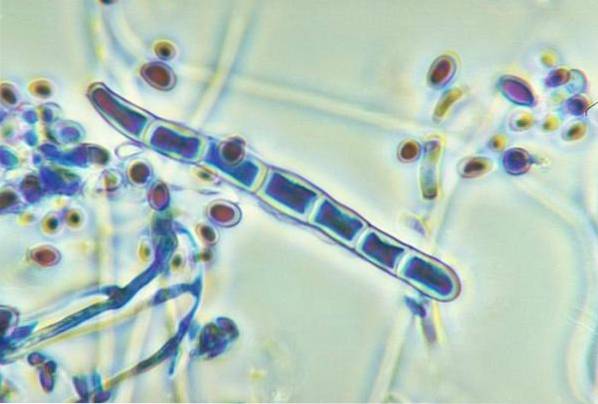


Yet No Comments